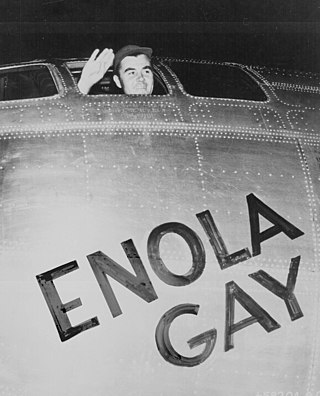
The Enola Gay is a Boeing B-29 Superfortress bomber, named after Enola Gay Tibbets, the mother of the pilot, Colonel Paul Tibbets. On 6 August 1945, during the final stages of World War II, it became the first aircraft to drop an atomic bomb in warfare. The bomb, code-named "Little Boy", was targeted at the city of Hiroshima, Japan, and caused the destruction of about three quarters of the city. Enola Gay participated in the second nuclear attack as the weather reconnaissance aircraft for the primary target of Kokura. Clouds and drifting smoke resulted in Nagasaki, a secondary target, being bombed instead.
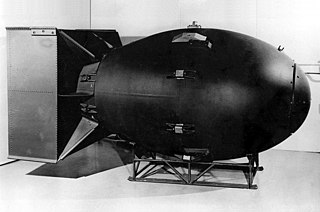
"Fat Man" was the codename for the type of nuclear weapon the United States detonated over the Japanese city of Nagasaki on 9 August 1945. It was the second of the only two nuclear weapons ever used in warfare, the first being Little Boy, and its detonation marked the third nuclear explosion in history. It was built by scientists and engineers at Los Alamos Laboratory using plutonium from the Hanford Site, and was dropped from the Boeing B-29 Superfortress Bockscar piloted by Major Charles Sweeney.

Little Boy was the name of the type of atomic bomb used in the bombing of the Japanese city of Hiroshima on 6 August 1945 during World War II, making it the first nuclear weapon used in warfare. The bomb was dropped by the Boeing B-29 Superfortress Enola Gay piloted by Colonel Paul W. Tibbets Jr., commander of the 509th Composite Group, and Captain Robert A. Lewis. It exploded with an energy of approximately 15 kilotons of TNT (63 TJ) and caused widespread death and destruction throughout the city. The Hiroshima bombing was the second nuclear explosion in history, after the Trinity nuclear test.

The Manhattan Project was a program of research and development undertaken during World War II to produce the first nuclear weapons. It was led by the United States in collaboration with the United Kingdom and with support from Canada. From 1942 to 1946, the project was under the direction of Major General Leslie Groves of the U.S. Army Corps of Engineers. Nuclear physicist J. Robert Oppenheimer was the director of the Los Alamos Laboratory that designed the bombs. The Army component was designated the Manhattan District, as its first headquarters were in Manhattan; the name gradually superseded the official codename, Development of Substitute Materials, for the entire project. The project absorbed its earlier British counterpart, Tube Alloys. The Manhattan Project grew rapidly and employed nearly 130,000 people at its peak and cost nearly US$2 billion. Over 80 percent of the cost was for building and operating the plants that produced the fissile material for the weapons. Research and production took place at more than 30 sites across the United States, the United Kingdom, and Canada.
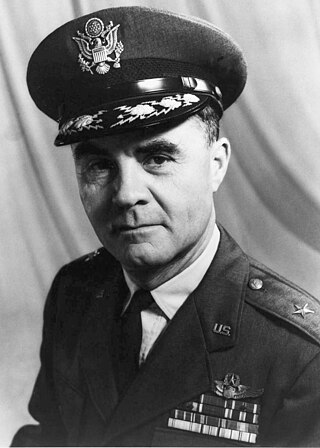
Paul Warfield Tibbets Jr. was a brigadier general in the United States Air Force. He is best known as the aircraft captain who flew the B-29 Superfortress known as the Enola Gay when it dropped a Little Boy, the first of two atomic bombs used in warfare, on the Japanese city of Hiroshima.

Theodore Jerome "Dutch" Van Kirk was a navigator in the United States Army Air Forces, best known as the navigator of the Enola Gay when it dropped the first atomic bomb on Hiroshima. Upon the death of fellow crewman Morris Jeppson on March 30, 2010, Van Kirk became the last surviving member of the Enola Gay crew.

Charles William Sweeney was an officer in the United States Army Air Forces during World War II and the pilot who flew Bockscar carrying the Fat Man atomic bomb to the Japanese city of Nagasaki on August 9, 1945. Separating from active duty at the end of World War II, he later became an officer in the Massachusetts Air National Guard as the Army Air Forces transitioned to an independent United States Air Force, eventually rising to the rank of major general.
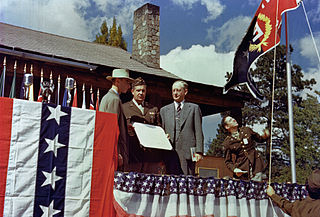
The Manhattan Project was a research and development project that produced the first atomic bombs during World War II. It was led by the United States with the support of the United Kingdom and Canada. From 1942 to 1946, the project was under the direction of Major General Leslie Groves of the US Army Corps of Engineers. The Army component of the project was designated the Manhattan District; "Manhattan" gradually became the codename for the entire project. Along the way, the project absorbed its earlier British counterpart, Tube Alloys. The Manhattan Project began modestly in 1939, but grew to employ more than 130,000 people and cost nearly US$2 billion. Over 90% of the cost was for building factories and producing the fissionable materials, with less than 10% for development and production of the weapons.

Project Alberta, also known as Project A, was a section of the Manhattan Project which assisted in delivering the first nuclear weapons in the atomic bombing of Hiroshima and Nagasaki during World War II.

Major General Thomas Francis Farrell was the Deputy Commanding General and Chief of Field Operations of the Manhattan Project, acting as executive officer to Major General Leslie R. Groves Jr.
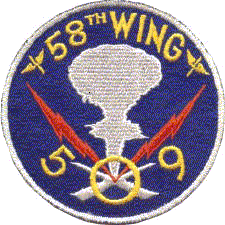
The 509th Composite Group was a unit of the United States Army Air Forces created during World War II and tasked with the operational deployment of nuclear weapons. It conducted the atomic bombings of Hiroshima and Nagasaki, Japan, in August 1945.
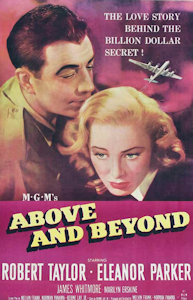
Above and Beyond is a 1952 American World War II film about Lt. Col. Paul W. Tibbets Jr., the pilot of the aircraft that dropped the atomic bomb on Hiroshima in August 1945.

Necessary Evil, also referred to as Plane #91, was the name of Boeing B-29-45-MO Superfortress 44-86291, participating in the atomic bomb attack on Hiroshima on August 6, 1945.

Big Stink – later renamed Dave's Dream – was a United States Army Air Forces Boeing B-29-40-MO Superfortress bomber that participated in the atomic bomb attack on Nagasaki, Japan on August 9, 1945. Assigned to the 393d Bomb Squadron, 509th Composite Group, it was used as a camera plane in support of the bomb-carrying B-29 Bockscar to photograph the explosion and effects of the bomb, and also to carry scientific observers. The mission was flown by crew C-14 but with Group Operations Officer Major James I. Hopkins, Jr., as the aircraft commander.

Jacob Beser was a lieutenant in the United States Army Air Forces who served during World War II. Beser was the radar specialist aboard the Enola Gay on August 6, 1945, when it dropped the Little Boy atomic bomb on Hiroshima. Three days later, Beser was a crewmember aboard Bockscar when the Fat Man bomb was dropped on Nagasaki. He was the only person to have served as a strike crew member of both of the 1945 atomic bomb missions.

On 6 and 9 August 1945, the United States detonated two atomic bombs over the Japanese cities of Hiroshima and Nagasaki respectively. The bombings killed between 129,000 and 226,000 people, most of whom were civilians, and remain the only use of nuclear weapons in an armed conflict. Japan surrendered to the Allies on 15 August, six days after the bombing of Nagasaki and the Soviet Union's declaration of war against Japan and invasion of Japanese-occupied Manchuria. The Japanese government signed the instrument of surrender on 2 September, effectively ending the war.

Bockscar, sometimes called Bock's Car, is the name of the United States Army Air Forces B-29 bomber that dropped a Fat Man nuclear weapon over the Japanese city of Nagasaki during World War II in the second – and most recent – nuclear attack in history. One of 15 Silverplate B-29s used by the 509th, Bockscar was built at the Glenn L. Martin Aircraft Plant at Bellevue, Nebraska, at what is now Offutt Air Force Base, and delivered to the United States Army Air Forces on 19 March 1945. It was assigned to the 393rd Bombardment Squadron, 509th Composite Group to Wendover Army Air Field, Utah in April and was named after captain Frederick C. Bock.
Charles Donald Albury was an American military aviator who participated in both atomic bombings of Hiroshima and Nagasaki. He piloted the United States Army Air Forces B-29 bomber known as the Bockscar during the mission that dropped the atomic bomb on Nagasaki on August 9, 1945. The bombing of Nagasaki killed an estimated 40,000 people instantly, and led to Japan's unconditional surrender on August 14, 1945, ending World War II.
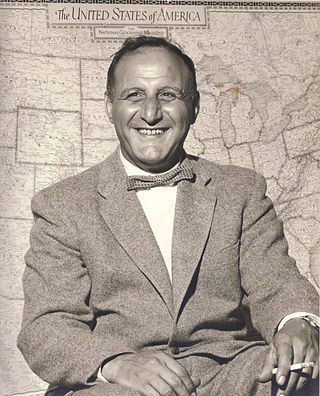
William Lewis "Bud" Uanna was an American security expert, who gained prominence as a security officer with the Manhattan Project, which built the first atomic bomb during World War II.

Rear Admiral William Reynolds Purnell was an officer in the United States Navy who served in World War I and World War II. A 1908 graduate of the United States Naval Academy, he captained destroyers during World War I. He was awarded the Navy Cross for his role in protecting convoys against German submarines as commander of the USS Lamson.





















